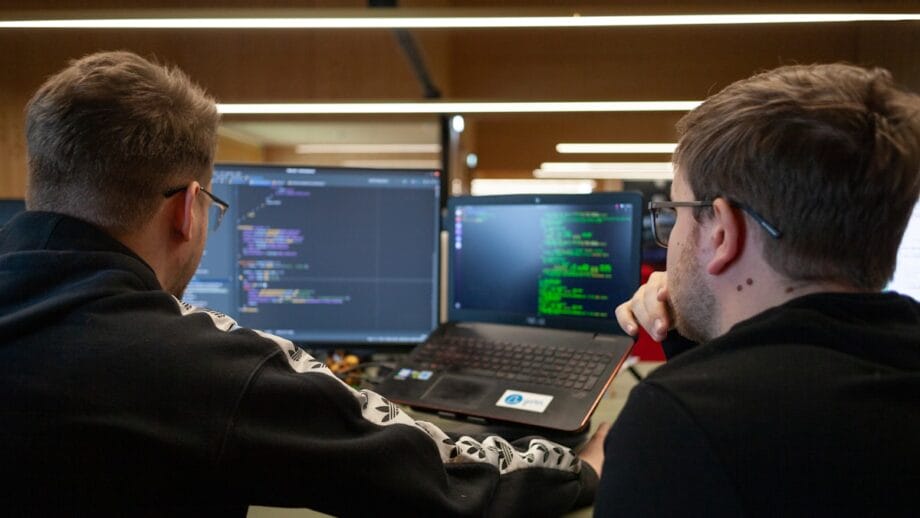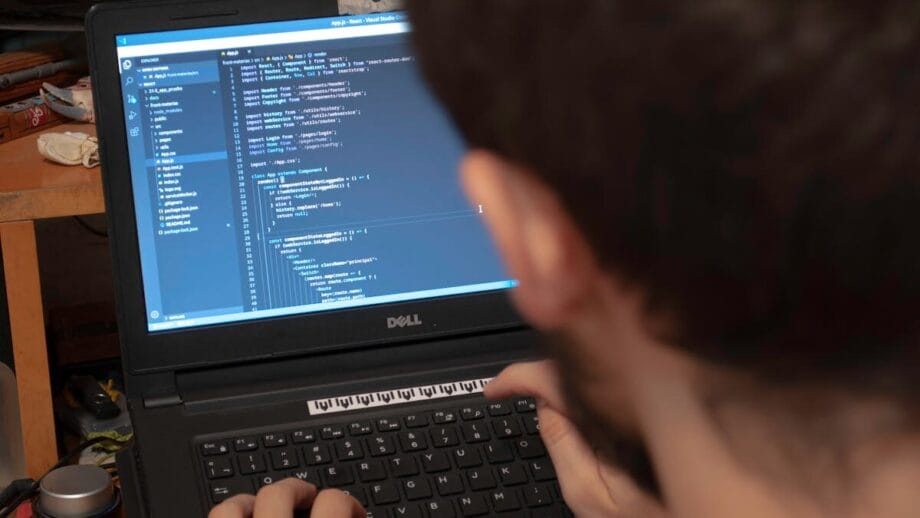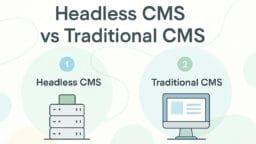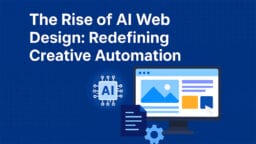With every wave of technology comes the same question: Will humans matter? Automation has disrupted industries from assembly lines to digital marketing. Now, in 2025, it is web and app development’s turn. AI automation and tools like GitHub Copilot, FlutterFlow, and Google’s Gemini pave the way for an “AI first” future, but developers are left needing to navigate an impossible dilemma.
On one side, there are all of the advantages that AI automation can offer in terms of speed, cost savings, consistency, and lower error rates. One startup is a travel startup that has been able to prototype a booking app in days with AI, instead of hiring multiple teams to build apps for different native platforms using AI-powered travel itinerary planning and cross-platform mobile app development services. In healthcare, AI assistants are already taking the role of triaging appointments and improving the patient experience.
In the case of human creativity, we look at the fact that, in the end, the great apps have aspects to them that are simply irreplaceable. Great apps are not just about the “working code”; they are about how they solve a problem that connects to people emotionally. An example would be a healthcare AI tool reminding an eligible patient to take their medication. The tool may do exactly as it should; however, only a well-thought-out human-centered design will make it empathetic and trustworthy.
Human creativity vs AI automation: that is the real debate we face. Are we moving towards an AI future where our apps are built by AI, or are we evolving towards one where developers become creative problem solvers who work with machines?
The AI Acceleration Wave

Over the last two years, AI technology has gone from “nice-to-have” to “default”.
- Google Search AI Mode has become more than an experiment; It is quickly becoming the default way for people to interact with the web. Instead of ten blue links, people are getting a conversational summary powered by Gemini.
- GitHub Copilot, Amazon CodeWhisperer, and Tabnine are now everyone’s coding copilots, enhancing the experience of millions of developers by eliminating repetitive work, assisting in error checking, and giving developers a better learning curve.
- FlutterFlow and Bubble changed the rapid prototyping game. They make it easy for even non-technical founders to spot real consumer behavior and make functional apps by giving AI-assisted UI suggestions and database integrations.
This new paradigm of no-code and rapid prototyping is about accessibility, not only productivity. There are a ton of startups that previously would have an inhibitive cost to even launch an app, are now able to tell their story, de-risking their path and building MVPs in weeks with almost no cost to them as AI tools wireframe the entire site, recommend APIs, and simulate user flows before they have written one line of code.
Where Humans Still Win
- Storytelling in Apps: No AI can replicate cultural nuances, emotional stimulants, or even empathy for mental health apps or child learning platforms. The human capacity to understand context is a far deeper understanding.
- Problem-Solving Beyond Code: Developers are not only programming; they are interpreting business goals into digital solutions. This requires conversations, understanding trade-offs, and compromising on priorities with stakeholders.
- Trust & Design: In the health sector, patients will not only want an AI healthcare assistant; they want to feel confident that the system is safe, compliant, and empathetic. Trust is still built by humans.
Take AI for travel itinerary destination generation. It can straightforwardly list a day trip in Barcelona with the most efficient cost and time. Does it know if your client wants to experience local culture instead of the destination they must see? Only with human instruction.
The Productivity vs. Creativity Trade-Off
This is the balance that most businesses are trying to manage:
What AI does well:
- Repetitive coding
- Testing, including bug identification
- UI mocking up
- Data identification and prediction
What humans do well:
- Design experiences that users appreciate
- Understanding subtleties in context
- Navigating ethics and cultural nuance
- Innovation through imagination

Take this example: In 2024, a hospitality company used AI to automate large elements of booking systems and guest support workflows. There were huge efficiency gains – but they received customer reviews saying “something felt missing.” The latter, manually designed experience improvements paired with automated ones, had a much steeper adoption curve.
This is why the best businesses today are hiring FlutterFlow developers or looking at Flutter consulting services. Not only to use AI features, but to combine hybrid automation and human intervention in scalable cross-platform mobile app development services.
Insights from Google and the Search AI Debate
Google’s switch to AI Mode is yet again the perfect example of where things are headed in development.
- For end-users, the move to AI summaries means faster answers to all their queries.
- For publishers, it means less traffic and a massive threat to their business.
- For Google, it is a bet on the future even if it casts aside the older ways.
This is also similar to the dilemma developers are facing: AI makes it faster and cheaper, but where does diversity and depth go if you don’t intentionally pay attention to where things are going?
What if all the apps were developed only by AI? What you would have are products that are all made the same, look the same, feel the same, and with a hollow, missing spark from real people.
The Future – A Cooperative Workflow
So, what do the next five years look like? Likely a hybrid model:
- AI as the first draft. AI provides code, designs, and workflows.
- Humans as editors and visionaries. Developers edit & contextualize scene solutions to ensure the best fit for the user.
- Agentic AI within verticals. Examples are healthcare, travel, and finance that will increasingly use AI assistants; however will still be bound by compliance and human oversight.
- Creative developers as captains. Developers will be accountable to a faction of developers, focusing on design thinking, empathy, and domain expertise rather than just coding.
FAQs

Q1: Will AI take over web developers altogether?
Not likely. AI will do the work, but developers will become more focused on creative problem-solving and strategy.
Q2: What part does AI play in healthcare applications?
AI healthcare assistants manage scheduling, reminders, and support questions, but people design the system so it’s trustworthy and relatable.
Q3: Are AI applications good for travel applications?
Yes, AI-integration travel itinerary building applications have personalized experiences and improve responsiveness and engagement while reducing time on planning, but since travel is a personal choice, human experience makes sure the relevance and emotional experience are communicated to the user.
Q4: What is the impact of AI on the costs of application development?
It reduces the cost of the prototyping and testing phase of application development. For example, travel website programming and application development costs were much improved thanks to design automation and AI prototyping leads.
Q5: Should start-ups hire developers if they can make apps using AI?
Yes. Businesses are still hiring FlutterFlow developers and exploring consulting with Flutter so they can leverage automation while having creative support from the experts.
Conclusion

The discussion of human creativity vs AI automation isn’t actually a competition – it is a partnership. AI is powerful in eliminating the friction from repetitive work, but humans have no peer when it comes to creating meaning, trust, and innovation.
That is why the most successful web and app development companies by 2025 will be the ones that blend AI automation with human insight. They won’t just be building apps faster – they’ll be building apps that last.
Because at the end of the day, users won’t remember how fast your code was written-they will remember how your app made them feel.






